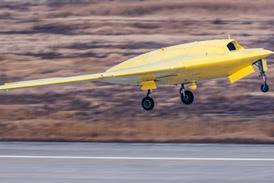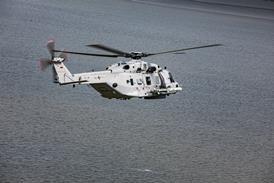Kevin O'toole/LONDON
ON 16 OCTOBER, the Lagadere group was named by the French Government as its favoured bidder in the privatisation of Thomson. In doing so, it started the dice rolling in what promises to be an intriguing game to see who will emerge as winners and losers in the ensuing consolidation of Europe's fragmented defence and electronics industry.
British Aerospace and GEC had been carefully positioning themselves on the starting blocks alongside French bidders Lagardere and Alcatel- Alsthom. Now the game has begun in earnest.
Although the Government's pronouncement seems to leave the way clear for Lagardere, a final ruling is awaited from the French privatisation committee. A decision is expected before the end of the year.
The European Community will also need to have a say, not least because of the French Government's proposal to provide close to Fr11 billion ($2.2 billion) in fresh cash to help pay down some of the debt mountain built up by the Thomson Multimedia arm.
Until such decisions are made, few hard facts are likely to emerge about the details of the bid and how the key Thomson-CSF business will be integrated into Lagardere group's own Matra Defense-Espace operation.
What is becoming a little clearer, however, is how the French Government hopes that the game will go. Its support for the Lagardere offer is based on the prospect of vertical integration between the Matra and Thomson-CSF defence businesses, allowing the new group to become "one of the world's most important companies", able to supply "turnkey arms systems".
In short, the deal offers to create one of the much-vaunted "poles of excellence", although still at a national level, around which the French Government hopes that wider European consolidation will naturally gravitate.
Alcatel-Alsthom proposed a more horizontal path, adding another core division, which would no doubt have been modelled on the successful Anglo-French GEC-Alsthom engineering operation.
Matra has already proved skilful in putting itself at the centre of European consolidation, most recently through the missiles joint venture with BAe, which was eventually signed earlier this year after a painfully long wait.
Neither partner has made secret the fact that Matra BAe Dynamics was just the first step in an attempt to form a missiles coalition in Europe to rival the US giants.
The joint venture already pools around $1.5 billion in missiles sales. Adding the Thomson-CSF operation takes the venture up to the $2.2 billion mark, where it can sit alongside the growing businesses of Hughes, Lockheed Martin and Raytheon.
Having become the first to achieve this critical mass in Europe, it seems almost inevitable that others will eventually be persuaded to throw in their lot with the new joint venture, possibly including GEC.
BAe has admitted that it is also actively courting German involvement in the venture, which could finally help prise Daimler-Benz Aerospace (DASA) from its apparently postponed missiles merger with Aerospatiale.
The French Government says that it intends to maintain support for the Aerospatiale-DASA axis on missiles and satellites, to ensure a second competitor, although it remains to be seen whether DASA will agree with such a philosophy.
For BAe, the timely link with Matra appears to stand it in good stead. As part of the missiles deal, it has the ability to maintain a 50% holding in the joint venture, if Thomson is brought into the fold.
Equally important, it also agreed to give broader support for Lagardere's bid for Thomson and may now look to grow in other sectors. For example, plans for an enlarged naval-electronics business (which were thwarted a year ago when GEC beat it in a bid for the UK's VSEL submarine yard) may now be revived.
While the early points appear to have gone to BAe, its UK defence rival still has plenty of room for manoeuvre. GEC can claim its own links to Lagardere through the Matra-Marconi Space business. It has also forged links with Thomson-CSF, led by the sonar joint venture signed in April.
The bigger opportunities will come if Thomson's broader defence-electronics and civil-avionics businesses are put into play. The group already holds leading European positions in areas such as radar, electronic warfare and avionics. An alliance with GEC in almost any of these sectors would give Europe a business large enough to rival the US giants.
Not least is the potential for consolidation of Europe's fragmented avionics industry. Others have eyed with envy Sextant Avionique's apparent stranglehold on Airbus avionics. Now there is the dawning possibility of partnership.
GEC and Sextant together would result in a $2 billion business, with an impressive presence on key military and civil programmes on both sides of the Atlantic. Other UK firms, such as Smiths Industries, may hope to benefit from the fall-out of any consolidation.
Just how far the consolidation goes is still anyone's guess, with the outcome further muddied by uncertainty over how the French Government may use its golden share, but the game has clearly begun, however.
Thomson's family tree has become increasingly complex
Source: Flight International




















